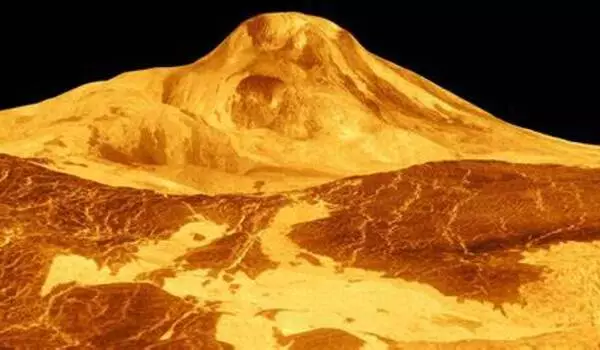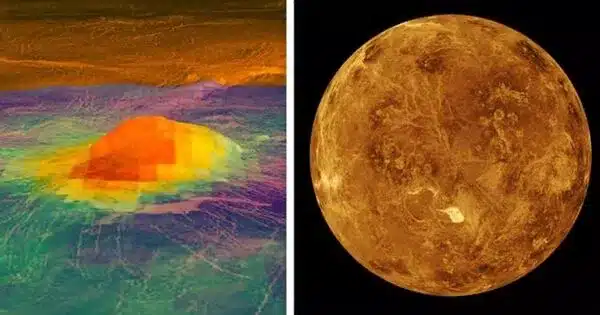The idea that ancient high-energy impacts could have fueled volcanic activity on Venus is intriguing, but it’s important to remember that our understanding of Venusian geology is still evolving, and this theory is just one of several proposed explanations for the planet’s volcanic history.
A team of researchers reconstructed Venus’s early impact history to explain how Earth’s sister planet has preserved a youthful surface despite the absence of plate tectonics. The researchers examined the two worlds’ early collision histories and concluded that Venus most likely endured higher-speed, higher-energy impacts, resulting in a super-heated core that fostered protracted volcanism and resurfaced the planet.
A team lead by the Southwest Research Institute reconstructed Venus’s early impact history to explain how Earth’s sister planet has preserved a youthful surface despite the absence of plate tectonics. The researchers examined the two worlds’ early collision histories and concluded that Venus most likely endured higher-speed, higher-energy impacts, resulting in a superheated core that fostered protracted volcanism and resurfaced the planet.
One of the mysteries of the inner solar system is that, despite their similar size and bulk density, Earth and Venus operate in strikingly distinct ways, particularly affecting the processes that move materials through a planet.
Dr. Simone Marchi
“One of the mysteries of the inner solar system is that, despite their similar size and bulk density, Earth and Venus operate in strikingly distinct ways, particularly affecting the processes that move materials through a planet,” said Dr. Simone Marchi, lead author of a new paper on these findings published in Nature Astronomy.
The Earth’s shifting plates constantly modify its surface as parts of the crust crash to produce mountain ranges and, in some locations, stimulate volcanism. Venus has more volcanoes than any other planet in the solar system yet only one continuous plate on its surface. More than 80,000 volcanos – 60 times more than Earth – have played a significant part in renewing the planet’s surface through lava floods, which may continue to this day. Previous models struggled to generate scenarios that could support this magnitude of volcanism.
“Our latest models show that long-lived volcanism driven by early, energetic collisions on Venus offers a compelling explanation for its young surface age,” said Yale University co-author Professor Jun Korenaga.

Earth and Venus formed in the same solar system neighborhood as solid components collided and gradually merged to form the two rocky planets. The tiny variations in the planets’ distances from the Sun altered their impact histories, specifically the number and consequence of these events. These differences occur because Venus is closer to the Sun and moves more quickly around it, stimulating impact circumstances. Furthermore, the tail of collisional growth is often dominated by impactors originating beyond Earth’s orbit, which necessitate larger orbital eccentricities in order to smash with Venus rather than Earth, resulting in more forceful impacts.
“Higher impact velocities melt more silicate, melting as much as 82% of Venus’ mantle,” said Dr. Raluca Rufu, a Sagan Fellow and SwRI co-author. “This produces a mixed mantle of molten materials redistributed globally and a superheated core.”
If impacts on Venus were substantially faster than on Earth, a few massive impacts may have had drastically different effects, with huge ramifications for the subsequent geophysical history. To examine the long-term evolution of Venus, the multidisciplinary team integrated experience in large-scale collision modeling and geodynamic processes.
“Venus internal conditions are not well known, and before considering the role of energetic impacts, geodynamical models required special conditions to achieve the massive volcanism we see at Venus,” said Korenaga. “Once you input energetic impact scenarios into the model, it easily comes up with the extensive and extended volcanism without really tweaking the parameters.”
















